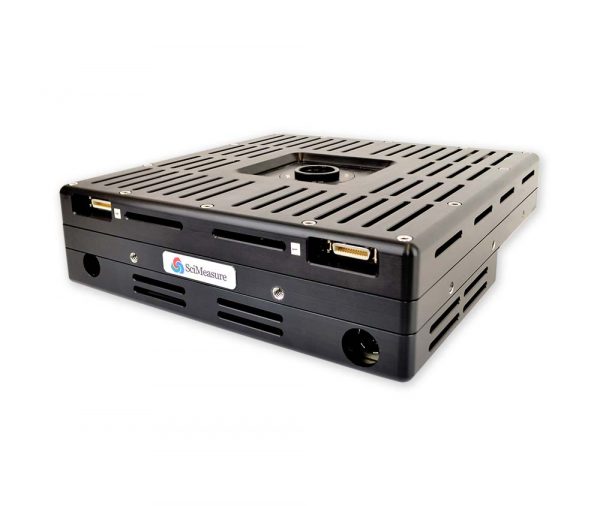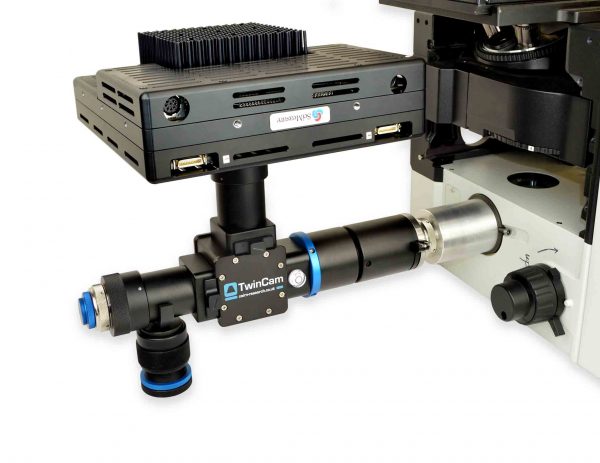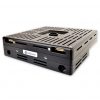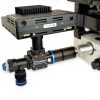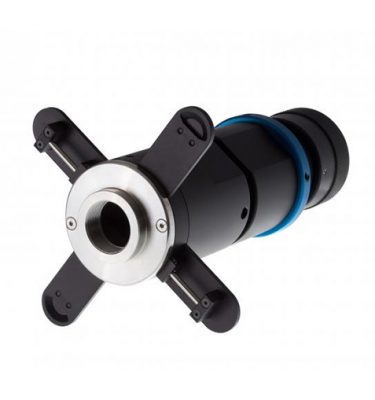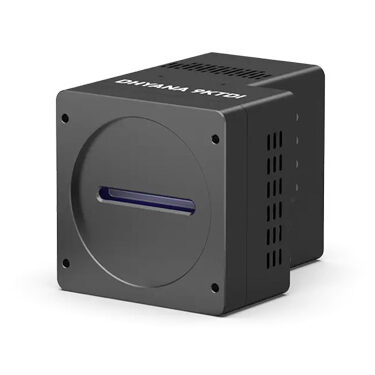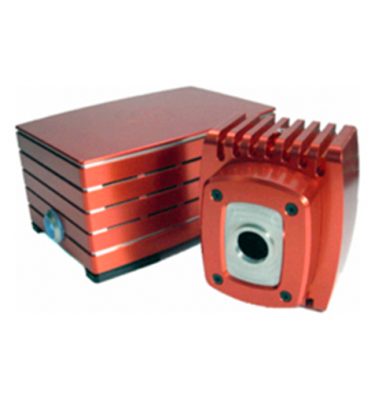Product Description
Link to RedShirtImaging brochure
Non-destructive read (NDR) mode
DaVinci CMOS imagers can be read non-destructively without resetting the pixels. Thus the pixels can be read repeatedly to reduce noise, or the frame rate can be doubled with any image frame serving as the reset frame for a subsequent image frame. This allows post-acquisition framing of fast events. By contrast, CDS imaging resets the pixels every frame and can cause events to be randomly split between frames as shown below.
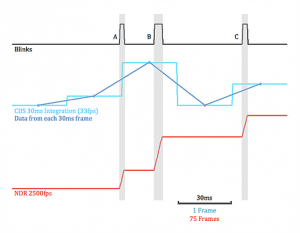
NDR for STORM
For STORM imaging, DaVinci CMOS imagers are run in a windowed mode at high frame rates. 2048×180 pixels at 2500 Hz is typical, acquiring 10,000 frames in 4 seconds. The imager is reset once every 500 frames. Sample drift and bleaching are greatly reduced.
Flashes are oversampled and both reset and image frames are optimally selected POST-ACQUISITION to maximize SNR and minimize background.
With slower EMCCD cameras, flashes can begin and end at any time within one or two adjacent frames adding to the uncertainty of when the flash occurred. The signal can be randomly split between frames, reducing the SNR.
Manuals Get a Quote
Comparisons
Applications
• Neurosciences – Voltage sensitive dye and calcium measurements
• Cardiac sciences – Voltage Sensitive Dye and calcium measurements, Optical Mapping
• High speed tracking
• STORM super resolution
• Low-light live cell imaging
• Spinning disk confocal
• Read our associated article on NDR technology here

Comparisons
Comparisons with CMOS imagers
EMCCDs offer low noise at low photon fluxes by using extremely high gain in their serial outputs, which leads to several problems. In high gain mode, EMCCDs suffer degradation in photon noise SNR due to the statistical processes used in the amplification process. This reduces the SNR by the square root of 2. Thus, a backthinned EMCCD with 90% QE has an effective QE of 45%. By contrast, DaVinci CMOS imagers have a 65% true QE, yielding a 20% better SNR.
These statistical processes also result in rogue multiplication events (spurious charge), leading to pixel spikes which when digitally eliminated in the camera can result in the elimination of real pixel spikes. In STORM imaging, flashes are ideally manifested as single frame spikes to give the best SNR ratio and are difficult to differentiate from spurious events.
The extremely high gain in the output depends on very high clock voltages in the camera. This leads to long-term damage to the sensor and the potential for gain instability.
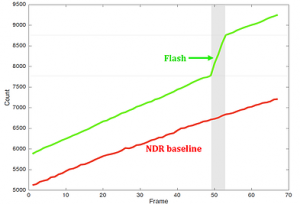
Comparisons with sCMOS
DaVinci CMOS imagers achieve low readnoise by using high responsivity outputs and 14-bit external A/D converters. Since the A/D converters are external to the device, all the pixels in one segment of the imager are read through the same A/D yielding a highly uniform and monotonic response requiring minimal processing. sCMOS devices use separate 11-bit A/Ds with high and low gains for each column requiring intensive processing to approximate a linear and monotonic response.
sCMOS cameras typically filter out noisy pixels to improve image quality. These filters must be turned off for STORM, resulting in poor image quality.


